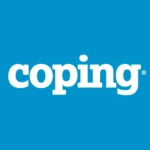Is Rinsing Your Sinuses with Neti Pots Safe?
Little teapots with long spouts have become a fixture in many homes to flush out clogged nasal passages and help people breathe easier. Along with other nasal irrigation systems, these devices – commonly called neti pots – use a saline, or saltwater, solution to treat congested sinuses, colds, and allergies. They’re also used to moisten nasal passages exposed to dry indoor air. But be careful. Per the U.S. Food and Drug Administration, improper use of these neti pots and other nasal rinsing devices can increase your risk of infection.
These nasal rinse devices – which include bulb syringes, squeeze bottles, and battery-operated pulsed water devices – are usually safe and effective products when used and cleaned properly, says Eric A. Mann, MD, PhD, a doctor at the FDA. But what does safe use mean?
First, rinse only with distilled, sterile, or previously boiled water.
Tap water isn’t safe for use as a nasal rinse because it’s not adequately filtered or treated. Some tap water contains low levels of organisms – such as bacteria and protozoa, including amoebas – that may be safe to swallow because stomach acid kills them. But in your nose, these organisms can stay alive in nasal passages and cause potentially serious infections. They can even be fatal in some rare cases, according to the U.S. Centers for Disease Control and Prevention.
Tap water isn’t safe for use as a nasal rinse because it’s not adequately filtered or treated.
Second, make sure you follow instructions.
“There are various ways to deliver saline to the nose. Nasal spray bottles deliver a fine mist and might be useful for moisturizing dry nasal passages. But irrigation devices are better at flushing the nose and clearing out mucus, allergens, and bacteria,” Dr. Mann says.
Information included with the irrigation device might give more specific instructions about its use and care. But these devices all work in basically the same way:
- Leaning over a sink, tilt your head sideways with your forehead and chin roughly level to avoid liquid flowing into your mouth.
- Breathing through your open mouth, insert the spout of the saline-filled container into your upper nostril so that the liquid drains through the lower nostril.
- Clear your nostrils. Then repeat the procedure, tilting your head sideways, on the other side.
Sinus rinsing can remove dust, pollen, and other debris, as well as help to loosen thick mucus. It can also help relieve nasal symptoms of sinus infections, allergies, colds, and flu. However, if your immune system isn’t working properly, consult your healthcare provider before using any nasal irrigation systems.
To use and care for your device:
- Wash and dry your hands.
- Check that the device is clean and completely dry.
- Prepare the saline rinse, either with the prepared mixture supplied with the device or one you make yourself. Plain water can irritate your nose. The saline allows the water to pass through delicate nasal membranes with little or no burning or irritation.
- Follow the manufacturer’s directions for use.
- Wash the device, and dry the inside with a paper towel or let it air dry between uses. Talk with a healthcare provider or pharmacist if the instructions on your device do not clearly state how to use it, or if you have any questions.
What Types of Water Are Safe to Use?
- Distilled or sterile water, which you can buy in stores. The label will state “distilled” or “sterile.”
- Boiled and cooled tap water – boiled for three to five minutes, then cooled until it is lukewarm. Previously boiled water can be stored in a clean, closed container for use within 24 hours.
- Water passed through a filter designed to trap potentially infectious organisms. The CDC has information on selecting these filters at CDC.gov.
Finally, make sure the device fits the age of the person using it.
Some children are diagnosed with nasal allergies as early as age two and may use nasal rinsing devices at that time if a pediatrician recommends it. But very young children might not tolerate the procedure.
Whether for a child or adult, talk to your healthcare provider to determine whether nasal rinsing will be safe or effective for your condition. If symptoms are not relieved, or if they worsen, after nasal rinsing, then return to your healthcare provider, especially if you have fever, nosebleeds, or headaches while using the nasal rinse.
Source: U.S. Food and Drug Administration, FDA.gov
This article was originally published in Coping® with Allergies & Asthma magazine, Spring/Summer 2017.


